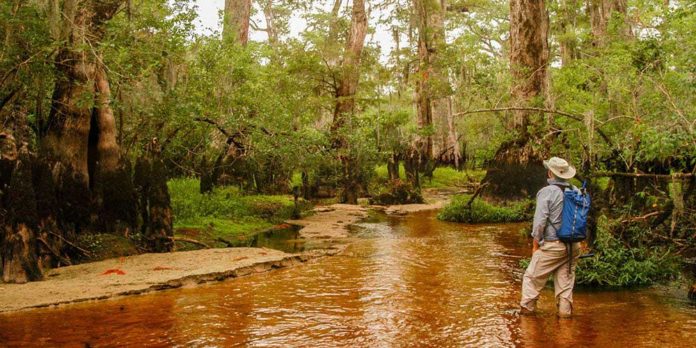The ancient trees are a piece of a flawless biological system that traverses the greater part of the 65-mile length of the Black River. In addition to their age, these trees are logically profitable methods for recreating ancient atmospheric conditions. The most established trees in the preserve expand the paleoclimate record in the southeast United States by 900 years and show proof of dry seasons and flooding during colonial and pre-pilgrim times that surpass any measured in modern times.
Now, scientists have recently documented stand of bald cypress trees in North Carolina which are almost 2,624 years old. As scientists reported, they are the oldest known living trees in eastern North America and the oldest known wetland tree species in the world.
In 2017, a David Stahle, Distinguished Professor of Geosciences, with his colleagues from the university’s Ancient Bald Cypress Consortium and other conservation groups, discovered that the trees from a forested wetland preserved along the Black River south of Raleigh, North Carolina. Stahle documented the age of the trees using dendrochronology, the study of tree rings, and radio carbon dating.
Scientists examined around 110 trees located in a 16,000-acre plot of land owned by the North Carolina Nature Conservancy. The Bald Cypress trees are located along the Black River.
Stahle noted, “It is exceedingly unusual to see an old-growth stand of trees along the whole length of a river like this. Bald cypress is valuable for timber and they have been heavily logged. Way less than 1 percent of the original virgin bald cypress forests have survived.”
Katherine Skinner, executive director of The North Carolina Chapter of The Nature Conservancy said, “Dr. Stahle’s original work on the Black River, which showed trees dating from Roman times, inspired us to begin conservation on the Black more than two decades ago. This ancient forest gives us an idea of what much of North Carolina’s coastal plain looked like millennia ago. It is a source of inspiration and an important ecosystem. Without Dr. Stahle, it would have gone unprotected and likely destroyed.”
Stahle said, “The area of old growth bald cypress was 10 times larger than I realized. We think there are older trees out there still.”
The study is published in the journal Environmental Research Communications.
